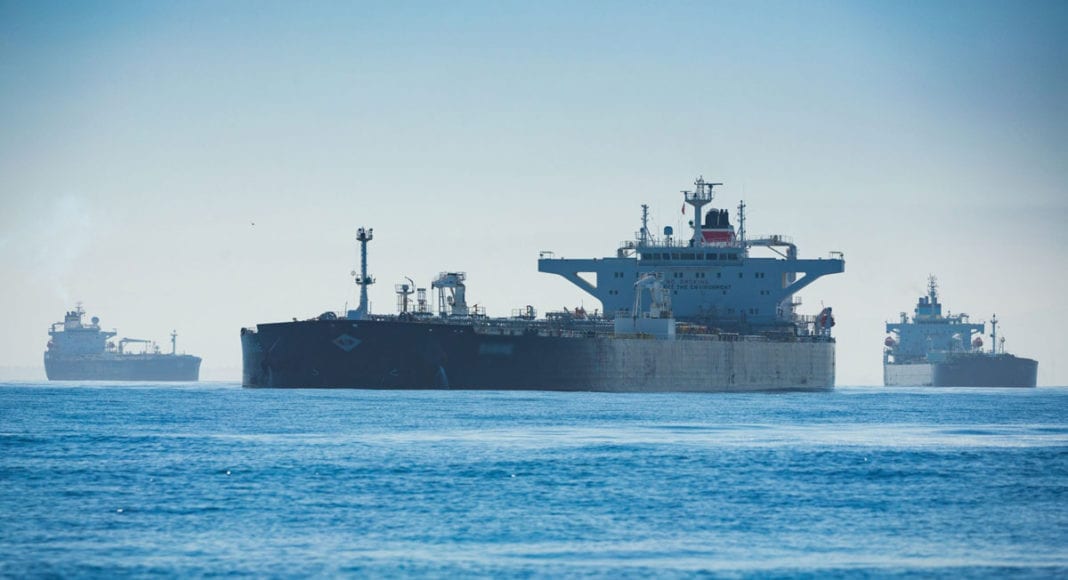(S&P Global Platts) In August, average crude production by state-owned PDVSA and its foreign partners fell to 520,000 b/d, slightly below the 524,000 b/d reported for July, and 535,000 b/d below the recovery target announced in April by petroleum minister Tareck El Aissami, according to internal daily production reports reviewed by S&P Global Platts.
According to the reports, recurrent electricity supply failures and the lack of diluents for extra-heavy crude have affected the PDVSA recovery plan and have put the original goals behind schedule.
For Caracas-based analyst Einstein Millan, the import of diluents for extra-heavy crude remains one of the most important obstacles for PDVSA to achieve a sustained recovery of its crude oil production.
“We don’t know how much diluent PDVSA has imported,” Millan said. “There has been a modest increase in domestic production of light crude, which has somewhat relaxed the need for these imports.”
“Additionally, there was a significant buildup of inventories because some upgraders were not operational and some blended crudes ran out of market in some areas of the world, which has allowed PDVSA to export more barrels than it produces.”
“This difference between Venezuelan exports and production further opens the gap in the calculations of direct and secondary sources of information in the oil market.”
Below company’s target
In August, the production of PDVSA and partners in the Orinoco Belt remained at an average of 290,000 b/d, or 250,000 b/d below the target set by the company, because of the lack of diluents needed to transport and upgrade extra heavy crude, which has the viscosity of asphalt.
“In the last few months, teams contracted by PDVSA have been working and have activated some wells that needed minor repairs, such as changing pumps, valves and cleaning pipes,” Millan said.
“However, there is no increase in production, which has been maintained since the beginning of the year between 510,000 b/d and 530,000 b/d and will keep fluctuating at those levels, given the Orinoco Belt’s operational turnover cycle is very high because the wells need to be maintained on a permanent basis.”
“Those contracted teams repair one well and three are damaged, they repair seven wells and four are damaged. The sum remains the same.”
Joint venture companies
The production reports gave details about the joint venture companies in which PDVSA and foreign partners participate in the four main blocks in which the Orinoco Belt oil basin is divided: Carabobo, Ayacucho, Junín and Boyacá. In these blocks, PDVSA has formed seven joint ventures, with another nine in development stages.
According to the reports, average crude output during August in the Carabobo block was 140,000 b/d; in Ayacucho 96,000 b/d; in Junín 46,000 b/d; and in Boyacá 8,000 b/d.
In the Orinoco Belt, the Petrolera Sinovensa joint venture (PDVSA 60%, CNPC 40%) operated at an average 25,000 b/d, or 23.8% of its maximum 105,000 capacity. Petromonagas (PDVSA 60%, Russia 40%) processed 55,000 b/d, or 45.8% of its maximum capacity of 120,000 b/d.
For its part, the joint venture Petropiar (PDVSA 70%, Chevron 30%) operated at an average 41,000, b/d, or 21.6% of its 190,000 b/d capacity.
According to internal reports, the extra heavy oil production at Petro San Felix and Petrocedeno, both companies wholly owned by PDVSA, in the Junin block was 18,000 b/d and 20,000 b/d, respectively.
Production at the Morichal and San Tome fields, which are 100% owned and operated by PDVSA in the Orinoco Belt, was 92,000 b/d in total. Average output by other companies in partnership with PDVSA and its foreign partners fluctuated between zero and 2,000 b/d, according to the reports.
Huge reserves
Situated in southeast Venezuela, the Orinoco Belt contains some of the largest reserves of crude in the world, but the oil needs dilution and upgrading because of its extremely high viscosities and heavy metal content.
In Monagas state oil fields, in eastern Venezuela, production averaged 120,000 b/d, or 229,000 b/d below the production target set by El Aissami for August.
Aggregated average output in oil fields in western Zulia and Trujillo states remained at 102,000 b/d during August, or 164,000 b/d below PDVSA’s plan, according to reports.
Average monthly production of condensates was 8,000 b/d.
The daily production reports reviewed by S&P Global Platts contain preliminary, unofficial information that can change after consolidation.
El Aissami said in April that PDVSA’s new goal was to elevate crude output to 1.5 million barrels by the end of 2021.



